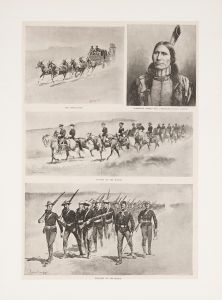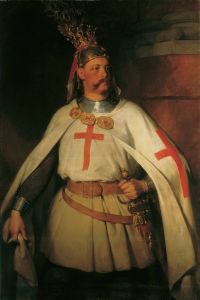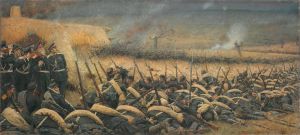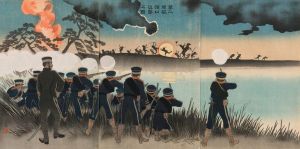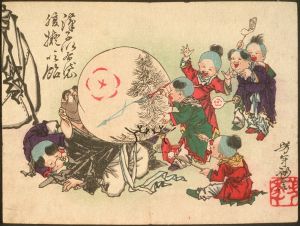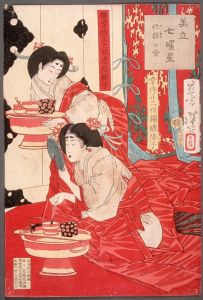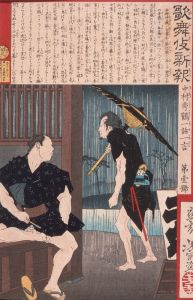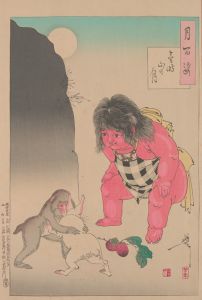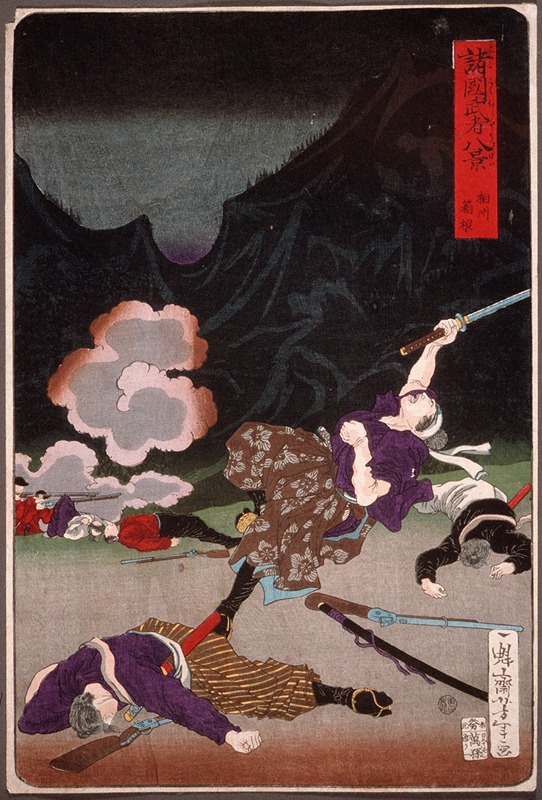
Battle of Hakone, Sagami
A hand-painted replica of Tsukioka Yoshitoshi’s masterpiece Battle of Hakone, Sagami, meticulously crafted by professional artists to capture the true essence of the original. Each piece is created with museum-quality canvas and rare mineral pigments, carefully painted by experienced artists with delicate brushstrokes and rich, layered colors to perfectly recreate the texture of the original artwork. Unlike machine-printed reproductions, this hand-painted version brings the painting to life, infused with the artist’s emotions and skill in every stroke. Whether for personal collection or home decoration, it instantly elevates the artistic atmosphere of any space.
The artwork Battle of Hakone, Sagami was created by Tsukioka Yoshitoshi (1839–1892), one of the most renowned ukiyo-e artists of the late Edo and early Meiji periods in Japan. Yoshitoshi is celebrated for his innovative and dramatic woodblock prints, which often depicted historical events, legendary tales, and scenes of samurai warfare. This particular work is part of his series A New Selection of Eastern Brocade Pictures (Shinsen Azuma Nishiki-e), which was produced between 1885 and 1889. The series is known for its vivid depictions of historical and legendary battles, showcasing Yoshitoshi's mastery of composition, color, and storytelling.
The Battle of Hakone, Sagami illustrates a scene from the Genpei War (1180–1185), a pivotal conflict in Japanese history between the Taira (Heike) and Minamoto (Genji) clans. This war ultimately led to the establishment of the Kamakura shogunate under Minamoto no Yoritomo. The specific battle depicted in this print took place in Hakone, located in the Sagami Province (modern-day Kanagawa Prefecture). The battle was part of the early stages of the Genpei War and involved clashes between the forces of Minamoto no Yoritomo and the Taira clan.
Yoshitoshi's print captures the intensity and drama of the battle, with dynamic figures and intricate details. His use of bold colors and striking contrasts highlights the chaos and violence of the scene, while also emphasizing the heroism and determination of the warriors. The composition reflects Yoshitoshi's ability to convey movement and emotion, drawing the viewer into the historical moment.
As with many of Yoshitoshi's works, this print not only serves as a visual representation of a historical event but also reflects the cultural and artistic trends of the Meiji era. During this time, there was a renewed interest in Japan's feudal past, as well as a desire to preserve traditional art forms like ukiyo-e in the face of rapid modernization and Western influence.
While specific details about the exact moment or individuals depicted in the Battle of Hakone, Sagami are not always clear, the work remains an important example of Yoshitoshi's contribution to Japanese art and his ability to bring historical narratives to life through his prints.





